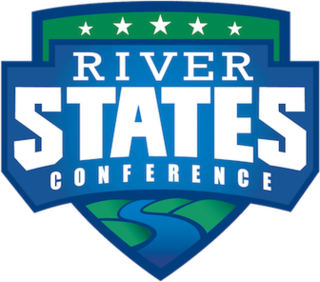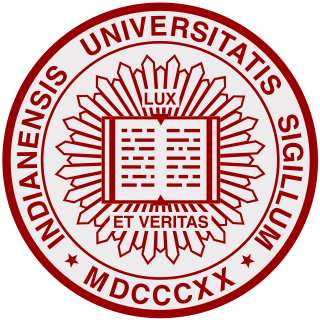Related Research Articles
A fellow is a concept whose exact meaning depends on context. In learned or professional societies, it refers to a privileged member who is specially elected in recognition of their work and achievements. Within the context of higher educational institutions, a fellow can be a member of a highly ranked group of teachers at a particular college or university or a member of the governing body in some universities; it can also be a specially selected postgraduate student who has been appointed to a post granting a stipend, research facilities and other privileges for a fixed period in order to undertake some advanced study or research, often in return for teaching services. In the context of research and development-intensive large companies or corporations, the title "fellow" is sometimes given to a small number of senior scientists and engineers. In the context of medical education in North America, a fellow is a physician who is undergoing a supervised, sub-specialty medical training (fellowship) after having completed a specialty training program (residency).

Indiana University–Purdue University Indianapolis (IUPUI) is a public research university in Indianapolis, Indiana, United States. It is a collaboration between Indiana University and Purdue University that offers undergraduate, graduate, and professional degrees from both universities. Administered primarily through Indiana University as a core campus and secondarily through Purdue University as a regional campus, it is Indiana's primary urban research and academic health sciences institution. IUPUI is located in downtown Indianapolis along the White River and Fall Creek.

The Indiana University School of Medicine (IUSM) is a major, multi-campus medical school located throughout the U.S. state of Indiana and is the graduate medical school of Indiana University. There are nine campuses throughout the state; the principal research, educational, and medical center is located on the Indiana University–Purdue University Indianapolis (IUPUI) campus in Indianapolis. With 1,461 MD students, 195 PhD students, and 1,442 residents and fellows in the 2023–24 academic year, IUSM is the largest medical school in the United States. The school offers many joint degree programs including an MD/PhD Medical Scientist Training Program. It has partnerships with Purdue University's Weldon School of Biomedical Engineering, other Indiana University system schools, and various in-state external institutions. It is the medical school with the largest number of graduates licensed in the United States per a 2018 Federation of State Medical Boards survey with 11,828 licensed physicians.

Indiana University—Purdue University Columbus (IUPUC) is a public university in Columbus, Indiana, United States. IUPUC offers degree programs from both Indiana University and Purdue University.

The Purdue University system is a public university system in the U.S. state of Indiana. A land-grant university with nearly 75,000 students across five institutions comprising six physical campuses, a statewide technology program, extension centers in each of Indiana's 92 counties, and continuing education programs. Additionally, there are another ~44,000 students enrolled in an online university. Each university in the system maintains its own faculty and admissions policies which are overseen by the Purdue University Board of Trustees. Purdue's main campus in West Lafayette is the best-known, noted for its highly regarded programs in engineering and adjacent subjects.
The Institute for Citizens & Scholars is a nonpartisan, non-profit institution based in Princeton, New Jersey that says it aims to strengthen American democracy by "cultivating the talent, ideas, and networks that develop lifelong, effective citizens". It administers programs that support civic education and engagement, leadership development, and organizational capacity in education and democracy.

The River States Conference (RSC), formerly known as the Kentucky Intercollegiate Athletic Conference (KIAC), is a college athletic conference affiliated with the National Association of Intercollegiate Athletics (NAIA). Although it was historically a Kentucky-only conference, it has now expanded to include members in Indiana, Ohio, Pennsylvania, and West Virginia, and at various times in the past has also had members in Missouri, Tennessee, and Virginia.

Mary Lee Hu is an American artist, goldsmith, and college level educator known for using textile techniques to create intricate woven wire jewelry.
Joseph Thomas Taylor was named dean of Indiana University at the downtown Indianapolis Campus on February 24, 1967. In 1972, he became the first dean of the newly created School of Liberal Arts at Indiana University – Purdue University Indianapolis (IUPUI). He was married to Hertha Ward-Taylor and they had three children: deceased actor Meshach Taylor, Judith F. Taylor and Hussain Taylor.

IUPUI University Library is the university library of Indiana University–Purdue University Indianapolis. IUPUI is an urban campus of Indiana University and Purdue University in Indianapolis, Indiana, United States. Indiana University is the managing partner.

Indiana University (IU) is a system of public universities in the U.S. state of Indiana.

Untitled (L's), a public sculpture by American artist David Von Schlegell, is located on the Indiana University-Purdue University Indianapolis campus, which is near downtown Indianapolis, Indiana. The sculpture is located just north of Joseph Taylor Hall in a grassy courtyard adjacent to Michigan Street. Cavanaugh hall frames the courtyard to the west, the library and Business building are east of the courtyard. This sculpture was created in 1978, and installed at IUPUI in 1980. The sculpture is a Minimalist composition of three identical steel L's. The L structures have a vertical beam that is 55 feet (17 m) tall and a horizontal beam of 45 feet (14 m). The beams themselves are 16 inches (410 mm) high and 12 inches (300 mm) wide.

Weather Tower, a public sculpture by American artist Jerald Jacquard, is located on the Indiana University-Purdue University Indianapolis campus, which is near downtown Indianapolis, Indiana. The sculpture is located off White River Parkway East Drive in a plaza near IUPUI campus housing. Jacquard created this 20.5-foot-tall (6.2 m) painted steel sculpture in 1985. It was acquired by the Indianapolis Museum of Art in 1999, where it stood at the front entrance until de-accessioned and moved to IUPUI's campus in 2005.
Temple VI, a public sculpture by American artist Austin Collins, is located on the Indiana University-Purdue University Indianapolis campus, which is near downtown Indianapolis, Indiana. The piece is on an indefinite loan from the artist to Indiana University-Purdue University Indianapolis (IUPUI) and is located outside of the east entrance to Lecture Hall, a building on IUPUI's campus. Lecture Hall, nicknamed LE on campus maps, is located at 325 University Boulevard in Indianapolis, Indiana in the United States. The sculpture was created in 1996.
The National Math and Science Initiative (NMSI) is a non-profit organization based in Dallas, Texas, that launched in 2007. Its mission is to improve student performance in the subjects of science, technology, engineering, and math (STEM) in the United States. It attempts to do this by scaling up local academic programs to a national level.
Mathematics and Science Partnerships (MSP) is education policy from Title 2, Part B, Sections 2201-2203 of the No Child Left Behind Act of 2001. The purpose of MSP is to increase student achievement in science and mathematics by partnering IHE science, math, and engineering departments with elementary and secondary science and math teachers in high-need local educational agencies (LEAs) in order to develop teachers' content knowledge and instructional performance. SEAs may apply for competitive grants and then IHEs and LEAs may apply for a subgrant of the SEA.
Minerva Cordero Braña is a Puerto Rican mathematician and a professor of mathematics at the University of Texas at Arlington. She is also the university's Senior Associate Dean for the College of Science, where she is responsible for the advancement of the research mission of the college. President Biden awarded her the Presidential Award for Excellence in Science, Mathematics, and Engineering Mentoring (PAESMEM) on February 8, 2022.
The Indiana University School of Nursing is an academic college of higher education connected to Indiana University with its main research and educational facilities on the Indiana University – Purdue University Indianapolis campus and at Indiana University Bloomington. It is known for its nursing research and education, scholarship of teaching and nursing practice, and for its collaborations with IU hospitals and clinical partners. Established in 1914 as the Indiana University Training School for Nurses, it awarded its first nursing diplomas in 1917 and was renamed the IU School of Nursing in 1956. It offers a four-year Bachelor of Science in Nursing (BSN) degree, a Master of Science in Nursing (MSN) degree, and two doctoral degrees: Doctor of Nursing Practice (DNP) and Doctor of Philosophy (Ph.D.). The IU nursing school has received multiple research grants from the National Institutes of Health.
The Council for the Accreditation of Educator Preparation (CAEP) is a professional accreditor focused on accrediting teacher education programs in U.S. colleges and universities. It was founded in 2013 as a result of the merger of two predecessor organizations, the Teacher Education Accreditation Council (TEAC) and the National Council for Accreditation of Teacher Education (NCATE).
From 1867 to 1980, the public elementary school no. 4, or Mary E. Cable Elementary School, occupied the site on the corner of North Blackford Street and West Michigan Street in Indianapolis. The school provided education to young African American children beginning in 1922 due to the segregation of public education. IUPUI acquired the building and used it to house various academic programs and departments until its demolition in 2006.
References
- ↑ "Remarks by the President on the 'Educate to Innovate' Campaign and Science Teaching and Mentoring Awards" (January 2, 2010).
- ↑ What Matters Most, pp. 6-8 (September 1996), The National Commission on Teaching and America's Future, Washington, D.C.
- ↑ See, for example, William L. Sanders and June C. Rivers, "Cumulative and Residual Effects of Teachers on Future Student Academic Achievement" (November 1996), The University of Tennessee-Knoxville, and Reginald Clark, "Closing the Achievement Gaps" (November 2002), Learning Point Associates/North Central Regional Educational Laboratory.
- ↑ Sean Corcoran, "Human Capital Policy and the Quality of the Teacher Workforce," in Dan Goldhaber and Jane Hannaway, eds., Creating a New Teaching Profession (Washington, DC: The Urban Institute Press, 2010), p. 31; see also Donald Boyd, Pamela Grossman, Hamilton Lankford, Susanna Loeb, and James Wyckoff, "Teacher Preparation and Student Achievement" (August 2008), CALDER Working Paper No. 20, The Urban Institute, Washington, D.C.
- ↑ "Foundation Hopes to Lure Top Students to Teaching"(December 20, 2007), The New York Times.
- ↑ "Project's aim: Revamp colleges, create better teachers" (December 20, 2007), The Indianapolis Star.
- ↑ Indiana (2009). Acts: Laws Enacted by the ... General Assembly at the ... Special Session and the ... Regular Session. Central Publishing Company. p. 2002.
- ↑ "New principal training program will expand with Lilly’s support". Chalkbeat Indiana. Hayleigh Colombo, September 3, 2014
- ↑ "Michigan lures teachers to inner cities with $16.7M program" (November 7, 2009), The Detroit News.
- ↑ "Colleges get grant for math, science teachers" (January 7, 2010), The Detroit Free Press.
- ↑ "4 Ohio colleges among leaders in training science, math teachers" (March 3, 2010), The Columbus Dispatch.
- ↑ Mack, Julie. "Quit your job and go into teaching? Woodrow Wilson Teaching Fellowship puts math, science professionals in the classroom", MLive.
- ↑ [Columbus State part of Georgia's inaugural class of fellows to improve STEM teachers"]. Ledger-Inquirer. By MARK RICE June 26, 2015
- "Woodrow Wilson Teaching Fellowship to Be Launched in New Jersey". Philanthropy News Digest. December 14, 2012